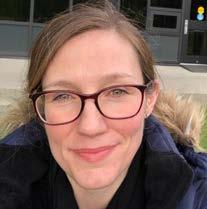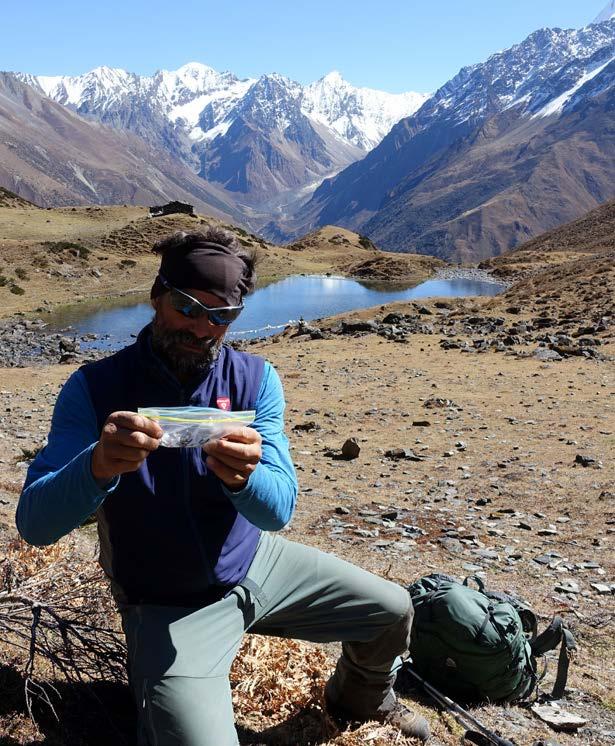
4 minute read
PAST PROJECT UPDATES
MICROPLASTICS
The largest known dataset of microplastics in the world’s oceans and rivers, our global microplastics dataset continues to help scientists understand how microplastics may have severe impacts on human and environmental health.
DATA USER SPOTLIGHT:
CORRELATING CANCER WITH MICROPLASTICS POLLUTION
RUTGERS UNIVERSITY | DRS. SUBHAJYOTI DE, XIAOJU HU, & ANTARA BISWAS
The average American eats, drinks, or breathes in roughly 74,000 microplastic particles per day. Those microplastics not only contain potentially harmful chemicals from their manufacture; they also absorb and transport chemicals from the environment. Rutgers University associate professor Dr. Subhajyoti De, along with two postdoctoral scientists, used our global microplastics dataset to help understand whether certain types of cancer mutations in different countries might be linked to higher rates of microplastic pollution in the waters surrounding those nations. The team observed that, even within the same cancer type, the pattern of mutations that are typically associated with harmful chemicals found in microplastics differed between cancer patients from different countries. For instance, Dr. De notes, “specific mutational signatures found in colon cancer were different between cohorts from the USA and East Asia, which correlated with corresponding changes in microplastic concentration in ocean water in those regions.” More research is necessary to determine whether microplastics may be causing, as opposed to merely being correlated with, these differences. The team’s findings call for a systematic assessment of the public health consequences of microplastic exposure world-wide, for cancer and other diseases.
IRRIGATING WITH PLASTIC
COLORADO STATE UNIVERSITY | JAN SITTERSON
ROYAL ROADS UNIVERSITY | MELINA SORENSEN
Some microplastics are small enough to get picked up in the air and carried long distances, depositing their chemical load via rain, snow, and dust onto wilderness areas and farm crops.
Colorado State University’s Jan Sitterson and her team are analyzing snow and stream samples near Fort Collins and Greeley, Colorado to determine whether microplastics are flowing into farms through snowmelt-fed irrigation waters.
“Open source datasets are vital for increasing research outreach, building scientific knowledge, and collaboration,” Sitterson explains. “The Adventure Scientist microplastic dataset helped me determine what was already being done on this topic and the ranges of microplastic amounts found by other scientists to compare to water samples for my own research.”
DATA USER SPOTLIGHT:
PLASTIC SEAS
As a marine naturalist for four years, Melina Sorensen witnessed both the beauty and the decline of killer whales around Vancouver Island, British Columbia. Now a graduate student at Royal Roads University, Sorensen is working to understand how toxins from microplastics may be involved in that decline.
Sorensen used microplastics data from Adventure Scientists to create a risk map showing where microplastics accumulate in the Salish Sea, the waters south and east of Vancouver Island. “The value of open-sourced datasets has been immeasurable, especially given COVID-19 constraints,” she says.
Initial results indicate microplastics congregate around the southern Gulf Islands and off Victoria. The next phase of her research will identify species most at risk in those areas due to toxins from microplastic pollution.
SCIENTIST SPOTLIGHT:
DR. ASHLEE EARLE
BROAD INSTITUTE OF MIT AND HARVARD
Bacteria that resist our antibiotics are poised to create a public health crisis that may dwarf the suffering of this past year. By 2050, antibiotic-resistant bacteria may kill 10 million people annually. Four years ago, Dr. Ashlee Earl, along with colleague Dr. Michael Gilmore, partnered with Adventure Scientists to deploy volunteer adventurers
around the world to collect wild animal scat. The goal? Isolate the genes responsible for antibiotic resistance and stop the arms race between the microbes and our medicines.
“This issue is a big deal, but it’s not inevitable,” Earl, a microbiologist, says. “In order to make this not come to pass, it requires all of us. We are going to have to

bring science to the table and figure out how each of us can work together to turn the tide. Organizations like Adventure Scientists are a puzzle piece in the answer to this problem.”
So far, Earl and fellow scientists have dramatically narrowed the search for the genes responsible for antibiotic resistance. By understanding what these genes can tell us about how the microbes resist antibiotics, scientists and medical professionals can more quickly identify antibiotic-resistant infections in hospital settings, uncover new ways to target the bacteria, and design better antibiotics.
“Adventure Scientists has enabled scientists to bring those samples into the lab so we can start shining light on questions about antibiotic resistance and look in places we’ve never been able to look before,” explains Earl. “It’s been quite extraordinary. And we desperately need it. We really do.”
Volunteers collected animal scat such this sample from a Himalayan blue sheep in Nepal, that enabled the Harvard team to narrow their search for the genes responsible for antibiotic resistance.

PHOTO: LONNIE DUPRE






